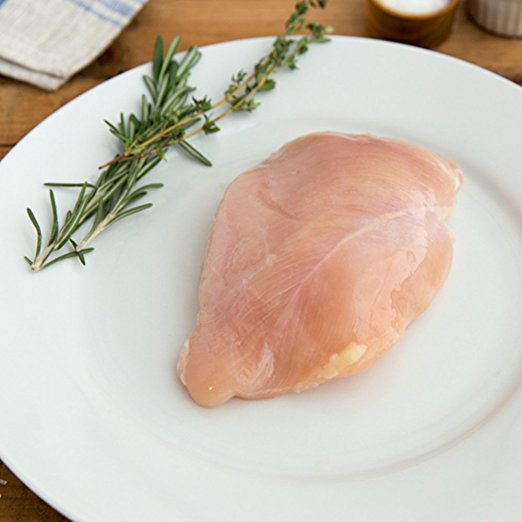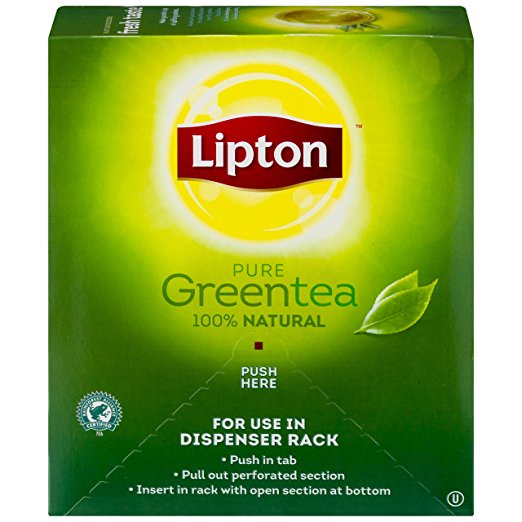Fat Loss Through Safe Fasting
There’s more than one way to fast – and more than one reason behind fasting. You may have heard of ways that fasting is done for religious purposes or as a body cleanse, but it can also be done to help you get into shape.
Both men and women who want to get rid of fat and set their body on a healthier path often choose to fast. Fasting can be the motivator that makes it easier to shed fat.
To lose weight, most people eat the way that they should within portion limits that they should. However, there can be all sorts of reasons why your body stores more fat than it needs to – even when you’re dieting.
For those who have a tendency to overindulge, fasting can help restore boundaries that were stretched, stopping a cycle of overeating. If done the right way, fasting is a safe, effective way to lose weight.
Different Types of Fasts
Fasts can vary, depending on which category that they’re in and there are several. The way that these fasts are implemented will depend on which fast you do.
A complete fast is a fast in which you don’t eat anything at all – including any liquids. This fast can be the most difficult to stick with and should only be undertaken for a very short period of time.
It isn’t recommended that you follow this type of fast for longer than 3 days. After three days, you run the risk of dehydration. How severe the dehydration is depends on if you’re in a hot or cold environment and the shape that you’re in prior to the fast.
If you’re in a hot environment, your body will dehydrate fairly quickly and your internal body temperature can get too high. You can suffer severe symptoms if you’re not careful.
Desperate people have survived longer than 3 days without any liquid, including water, but after 3 days, mental confusion and problems with your heart rate can begin to affect you.
In a partial or limited fast, you don’t eat anything that has to be chewed, but you do take in liquids that offer some nourishment. This is also sometimes called a liquid fast.
As long as it’s in liquid form, you can have it on this fast. But you want to abstain from alcohol as one of the liquids because, depending on what liquids you consume, the alcohol will hit your bloodstream much faster.
Time fasts are fasts that limit the time frame in which you don’t eat anything. It can be from a specific set of hours such as for three or six or eight hours. Some people do from dawn to dusk or from noon to midnight.
Limiting certain foods is another type of fast that you can do. In this fast, you refrain from eating some foods such as meats or sweets or bread. Some people do this during religious holidays.
With a counted day fast, you choose a specific number of days to fast. This can be done one day at a time, in blocks of days or every other day. For example, you can choose to fast on Mondays, Tuesdays and Wednesdays, but not the rest of the week.
Or you can switch it out as one day of fasting followed by a day of regular eating and you can safely do this for a longer period of time.
Meal fasting is a fast in which you choose not to eat for 1 or 2 meals of the day. Which meal you fast is left up to you.
Some people find a lot of success by choosing to go on a juice fast. In this fast, it’s best to have a juicer on hand. The way that this one works is that you can have any kind of fruit or vegetable that you want – as long as it’s completely liquefied.
On this fast, you’ll replace the meals and any snacks you normally ate with things you juiced. You should have no less than 3 glasses of the juice and no more than 6.
Another fast that can help you lose fat is a water fast. In a water fast, where nothing is taken in but water, you want to make sure that you don’t take in too much water because it can upset the body’s electrolyte levels. During this fast, you should not consume more than 8 glasses of 8 ounces of water.
If you want to fast because you have a lot of fat to lose and you’re considered by your doctor to be at an obese level of weight, you can go on a liquid protein fast. But while this fast is extremely successful and many have lose fat using it, it does need to be done only under the supervision of a doctor and only if you need to lose fat because your health has been adversely affected.
How Long You Should Fast
Each fast has a different suggested length of time that you should remain on the regimen in order to get the most benefits from it. You want to reach your goal to lose fat, but you want to do it in a healthy way.
If you do it for longer than what is healthy for you, you can do more harm than good in the long run. If you’re new to fasting, start out with a short period of time as your goal such as a time fast or a one day fast.
You can prepare for whichever fast you choose by gradually lessening the amount of food you eat for several days prior to the start of the fast. That will help your body become more accustomed to not having as much food in the stomach and staying on the fast for the duration will be easier.
How long you fast not only depends on the type of fast you choose, but also on what works for your lifestyle. The most common length of time is for 24 hours to 3 days. One week fasts are also common and are good for fat loss.
Longer fasts, such as the ones that last 10 days or ones that last longer than 30 days should be done with your doctor’s knowledge so your health can be monitored – especially if you have any health conditions.
Benefits of Fasting
Some of the benefits of fasting may help address other areas of your life. Fasting can be the catalyst that breaks a food addiction. It can also help lessen the desire for stimulants such as alcohol or cigarettes.
This is because what we put into our bodies causes an internal reaction. When you feed a craving, it only makes the craving grow. Fasting frees you from that addictive connective response within the body.
Cleansing the body is a benefit of fasting, too. You get rid of all the preservatives and other not good for you ingredients that are found in certain foods. When you’re not putting them into your body, you get rid of those toxins.
Lowered blood glucose levels and lowered blood pressure readings are another benefit that can be had by fasting.
Not only does fasting cause you to lose fat, but it can also cause you to lose weight, too. Seeing this reduction in numbers on the scale often helps to give people a stronger motivation to lose weight and get fit.
Fasting can eliminate the taste for unhealthy foods. By stepping away from what you’ve been eating, you can discover what your body truly craves. The benefits of fasting can also go beyond just what you gain physically.
Some of the benefits of fasting are emotional benefits. Because much of our lives center on food, by putting food aside for a time, we gain a clarity that we don’t have with food. It helps you discover why you’re eating and whether or not there’s a possibility that you eat to cope with pressures such as stress in your life.
Finally, fasting also gives you psychological benefits. People sometimes overeat or eat the wrong kinds of food because of a lack of self-control. Doing without foods or certain types of foods brings a renewed sense of self-control and clarity to the senses.
Many people who fast for the first time, gain a sense of satisfaction and go on to use that self-control in other areas of their lives.
Dangers to Avoid
While fasting can give you a multitude of benefits, you want to be aware of the downside of fasting while you’re doing it. There are certain issues that you should watch out for and if you encounter any of them, you should break the fast immediately.
These dangers can vary depending on which fast that you’re on. If you’re on the complete fast and you’re not taking in anything at all, you can easily dehydrate if you’re not careful.
The beginning states of dehydration produce symptoms such as less saliva production along with less urine production. You may also notice your urine is darker and has a new, unpleasant odor. You can develop high levels of ketones.
For mild dehydration, the solution is fairly simple. You need to rehydrate yourself slowly. Don’t consume an extreme amount of water in a short period of time because it will make you feel sick.
If the dehydration is allowed to continue, it will get worse. If the early symptoms are not addressed immediately, the dehydration will develop into fast heart rate, an inability to urinate and mood swings.
If you begin to vomit or dry heave and have liquid bowel movements, you need to seek medical treatment as soon as possible.
Complete fasts are not recommended long term because it sends the body into starvation mode which isn’t healthy for anyone.
Dangers to avoid with a limited or partial fast are a lack of nutrients. If your body isn’t getting the right amount of nutrients, it can lead to dizziness, fatigue and inflammation within the body.
You can also experience shaking. These are all signs that you need to stop fasting and reintroduce a normal diet back into your routine.
People who have diabetes or high blood pressure need to be careful because fasting can cause sharp drops in both blood glucose levels as well as blood pressure levels if the fasting is done incorrectly.
If you have diabetes, it’s best that you fast carefully. It isn’t recommended that diabetics being treated with medication go on long term fasts because the medication coupled with the lack of food can lower your glucose to levels that are dangerous.
With a juice fast, you want to be on the look out for extreme diarrhea and elevated glucose levels. Most foods used in a juice fast are packed with fiber and other nutrients that can clean out your system.
If you experience repeated diarrhea and your glucose levels are in the range where they can cause complications, you need to switch to another type of fast.
If you’re on a water fast, be careful that you don’t develop water intoxication. This can happen if you consume water too fast at once in the hopes of quelling of hunger pangs.
To keep from overdoing it with the water, you should pre-measure the amount you can have for this fast.
If you’re not following a healthy fasting plan, you can develop anemia. If you go too long without the proper balance of nutrients in your body, you can develop an electrolyte imbalance that can lead to a heart attack or other organ failure.
The best way to make sure that your fast is proceeding in a healthy way is to listen to your body. Feeling some hunger is normal. So is feeling a bit lightheaded or nauseated. Those feelings are associated with not eating. Anything outside of that, you need to pay attention to.
Exercise and Fat Loss
The type of fast that you decide to go on will determine whether or not you should exercise while you’re fasting for fat loss. If you go on a complete fast and you’re not taking in any food or liquid, it isn’t recommended that you do any kind of strenuous exercise.
Engaging in exercise without food or water can lead to serious health complications. Exercising during your time of fasting can help your body lose fat because of the way the body uses energy during the process.
When you’re taking in fewer calories because of a fast but exercising, the activity will burn fat. Before you exercise, make sure that your body is fully hydrated. Don’t overdo it during a workout if you’re fasting.
Keep the more intense workouts on the back burner for when the fast is over. The reason you want to be a little less intense is because you won’t have the same level of energy while fasting that you have when you’re eating as you normally do.
After the Fast
The fast is over and you feel great, so what’s next? You need to keep on pursuing methods that can help you lose fat. You don’t want to undo the progress that you just made.
Fortunately, having been on a fast has adjusted your stomach so that it’s used to getting less. Right after a fast, you don’t want to attempt to fill up on a big meal. If you jump right back to the way you were eating before, you could end up with an aching or upset stomach.
Your body needs time to come off a fast especially if the fast was a longer one. How you break the fast will depend on the fast that you were on. If you went on a fast and all you took in was water, you shouldn’t jump back to food right away. Instead, consume juiced foods.
If you ate juiced foods but no solid foods, then eat something small and bland for the first few days to reacquaint your stomach and digestive tract with normal food intake.
When your body is up to par with eating again, there are several things you can do to ramp up the fat burning. You can make sure that you have protein in your diet.
Add chili peppers to some of your meals. These are a fat burning food because of an ingredient in the peppers. Make sure that you have your proper water intake.
Don’t skimp on breakfast. Eating breakfast gives your metabolism the boost it needs to start working on the fat burning. Make sure that you get the fiber that you need.
Recommended Products For Fasting












